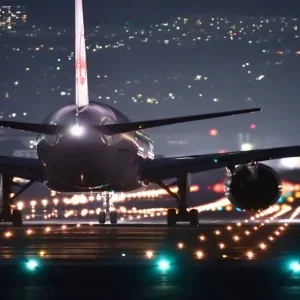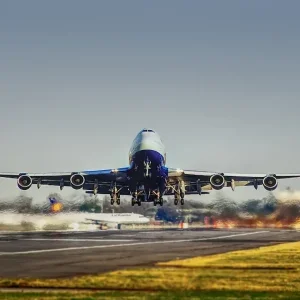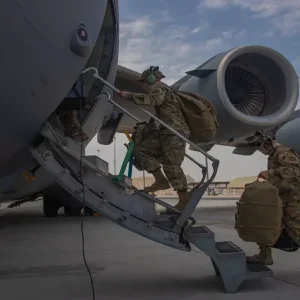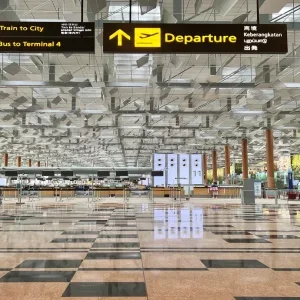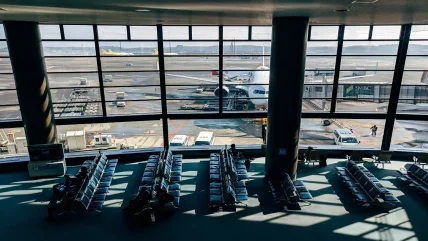
Economic downturns present significant challenges across various industries, and the airport sector is no exception. As the global economy fluctuates, airports must adapt to changing passenger volumes, shifts in airline operations, and evolving financial constraints. This article explores the impacts of economic downturns on airports, the strategies they employ to mitigate negative effects, and the potential pathways for future resilience.
The Impact of Economic Downturns on the Airport Sector
Decline in Passenger Traffic
Economic downturns typically result in reduced consumer spending, affecting the travel industry significantly. During periods of economic uncertainty, both leisure and business travel tend to decline as individuals and companies cut back on discretionary expenditures. The global financial crisis of 2008, for example, saw a sharp decline in passenger numbers, with the International Air Transport Association (IATA) reporting a 3.5% decrease in global passenger traffic in 2009.
Reduction in Airline Operations
Airlines often respond to economic downturns by scaling back operations to reduce costs. This can include cancelling flights, retiring older, less efficient aircraft, and delaying the introduction of new routes. For airports, this translates to fewer aircraft movements, lower landing fees, and reduced revenue from terminal services. The COVID-19 pandemic exacerbated this trend, with airlines grounding fleets and significantly cutting schedules in response to plummeting demand.
Financial Pressures on Airports
Airports derive revenue from a combination of aeronautical and non-aeronautical sources. Aeronautical revenue includes charges to airlines for landing, parking, and passenger services, while non-aeronautical revenue encompasses retail, parking, and real estate. During economic downturns, both revenue streams can be severely impacted. For example, the Airports Council International (ACI) reported that airports worldwide lost an estimated $125 billion in 2020 due to the COVID-19 pandemic.
Capital Investment Delays
Economic downturns can force airports to delay or cancel capital investment projects. These projects, often funded through a mix of debt and operating revenue, may become financially unviable as income decreases and borrowing becomes more challenging. Essential upgrades and expansions might be postponed, potentially affecting long-term capacity and service quality.
Strategies for Mitigating the Impact
Cost Management and Operational Efficiency
To navigate financial pressures, airports often implement stringent cost management strategies. This can involve renegotiating contracts, streamlining operations, and reducing workforce expenses through layoffs or furloughs. Technological investments, such as automated check-in and baggage handling systems, can also improve operational efficiency and reduce long-term costs.
Diversifying Revenue Streams
Airports are increasingly looking to diversify their revenue streams to mitigate the impact of downturns. Enhancing non-aeronautical revenue through retail, dining, and real estate development can provide a more stable income base. Airports such as Singapore Changi and Amsterdam Schiphol have successfully developed extensive retail and leisure offerings, transforming their terminals into shopping and entertainment hubs that attract non-travelling visitors as well.
Strengthening Airline Partnerships
Close collaboration with airline partners can help airports weather economic storms. Joint initiatives such as route development programmes, marketing support, and flexible slot management can maintain traffic levels and optimise utilisation of airport facilities. For instance, the partnership between Heathrow Airport and British Airways has been pivotal in maintaining a steady flow of passengers through the airport, even during economic challenges.
Government Support and Regulatory Relief
Government intervention can play a crucial role in supporting the airport sector during downturns. This support can take various forms, including direct financial aid, tax relief, and regulatory adjustments. During the COVID-19 pandemic, numerous governments worldwide provided financial support to airports to maintain operations and preserve employment. For example, the U.S. government’s CARES Act included $10 billion in grants to airports to cover operating expenses.
The Path to Future Resilience
Embracing Technology and Innovation
Technological advancements and innovation are critical for enhancing airport resilience. The adoption of digital technologies, such as biometrics for passenger identification and contactless payment systems, can improve efficiency and reduce operational costs. Furthermore, investment in data analytics allows airports to better predict and manage passenger flows, optimise resource allocation, and enhance the overall passenger experience.
Sustainable Practices and Green Initiatives
Sustainability is becoming increasingly important for the airport sector. Economic downturns provide an opportunity to reassess and reinforce commitments to environmental stewardship. Airports are investing in green technologies, such as renewable energy sources, electric ground vehicles, and sustainable building materials. For example, Oslo Airport has invested in a green terminal project, significantly reducing its carbon footprint. Implementing such initiatives not only addresses environmental concerns but can also attract environmentally conscious travellers and businesses.
Enhancing Passenger Experience
Focusing on passenger experience can differentiate airports and attract more travellers, even during economic slowdowns. Initiatives such as improving terminal amenities, offering seamless connectivity, and providing high-quality customer service can enhance satisfaction and loyalty. Some airports are leveraging virtual reality and augmented reality technologies to create immersive and engaging experiences for passengers, thereby increasing dwell time and non-aeronautical revenue.
Flexible Infrastructure Planning
Developing flexible and scalable infrastructure is essential for airports to adapt to changing demands. Modular design concepts allow airports to adjust capacity incrementally, avoiding the financial risks associated with large-scale expansions. For instance, London Gatwick Airport has employed modular terminal designs that can be expanded or contracted based on passenger volumes. This flexibility enables airports to respond more effectively to economic fluctuations.
Case Studies: Airports Adapting to Economic Downturns
Singapore Changi Airport
Singapore Changi Airport is renowned for its resilience and adaptability. During the 2008 financial crisis, Changi focused on enhancing its retail offerings and leisure attractions, such as the iconic Jewel Changi complex, to maintain passenger engagement and revenue. The airport also implemented cost-control measures and worked closely with airline partners to sustain traffic levels.
Dubai International Airport
Dubai International Airport leveraged its strategic location and status as a major transit hub to navigate economic downturns. The airport invested in infrastructure to support long-haul flights and fostered partnerships with international carriers, making it a preferred stopover destination. Additionally, Dubai International focused on enhancing passenger experience with luxury amenities and efficient services, attracting a steady flow of travellers even during challenging times.
Munich Airport
Munich Airport’s approach to economic downturns involves a strong emphasis on sustainability and innovation. The airport has invested in renewable energy projects, including a large-scale solar power plant, and has implemented digital technologies to streamline operations. Munich Airport’s commitment to environmental sustainability and technological advancement has bolstered its reputation and financial stability.
Conclusion
The airport sector’s response to economic downturns involves a combination of cost management, revenue diversification, technological innovation, and sustainability initiatives. By adopting these strategies, airports can mitigate the negative impacts of economic fluctuations and build long-term resilience. As the global economy continues to experience cycles of growth and contraction, the ability of airports to adapt and evolve will be crucial in maintaining their critical role in the global transportation network.
The lessons learned from past economic challenges, coupled with proactive measures and forward-thinking strategies, will enable airports to navigate future downturns more effectively, ensuring their continued success and contribution to the global economy.


